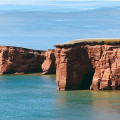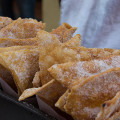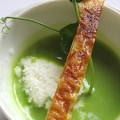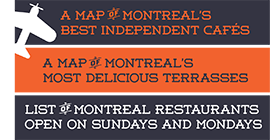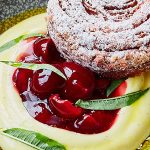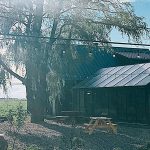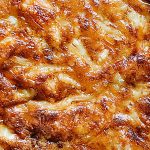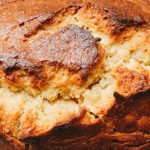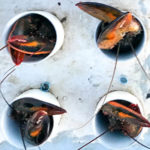
Watching an active beehive from behind a glass panel {photo © mrb404}
Confession: I have an uncontrollable fear of bees. I panic and can’t think straight and yet I am completely fascinated by them and don’t want to hurt them. A couple of weeks ago, I decided to confront my phobia head on by visiting Miels d’Anicet (aka bee central) up in the Hautes Laurentides in the hopes of overcoming my fear while also visiting the beautiful farm, stocking up on their delicious honey and attending a collaborative dinner with Restaurant Candide.
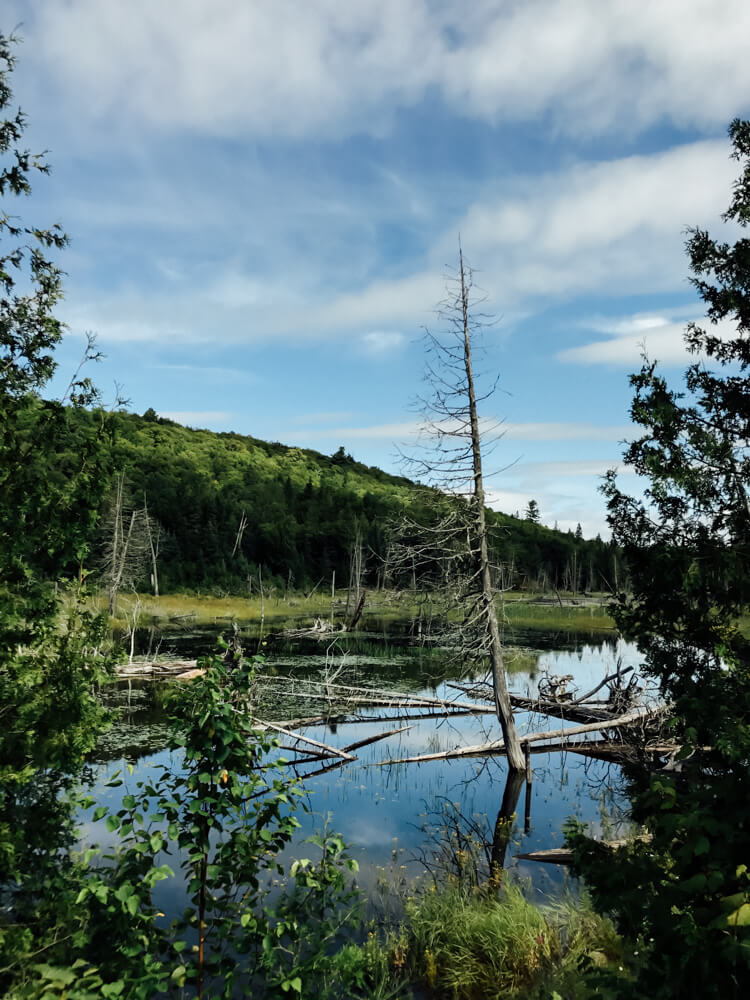
The road to Miels D’anicet is sprinkled with lovely vistas {photo © mrb404}
I met Anicet Desrochers and his lovely companion Anne-Virginie Schmidt a few years ago when their beautiful book Miel came out. I read the book cover to cover (while shielding my eyes when the bee photos were too real), have since seen them several times in Montreal and have been invited to visit them every time. I knew that if anyone could cure me of my bee phobia, it would be them. So I packed up my courage and my car and headed north to Ferme-Neuve, a tiny town 3 hours north of Montreal.
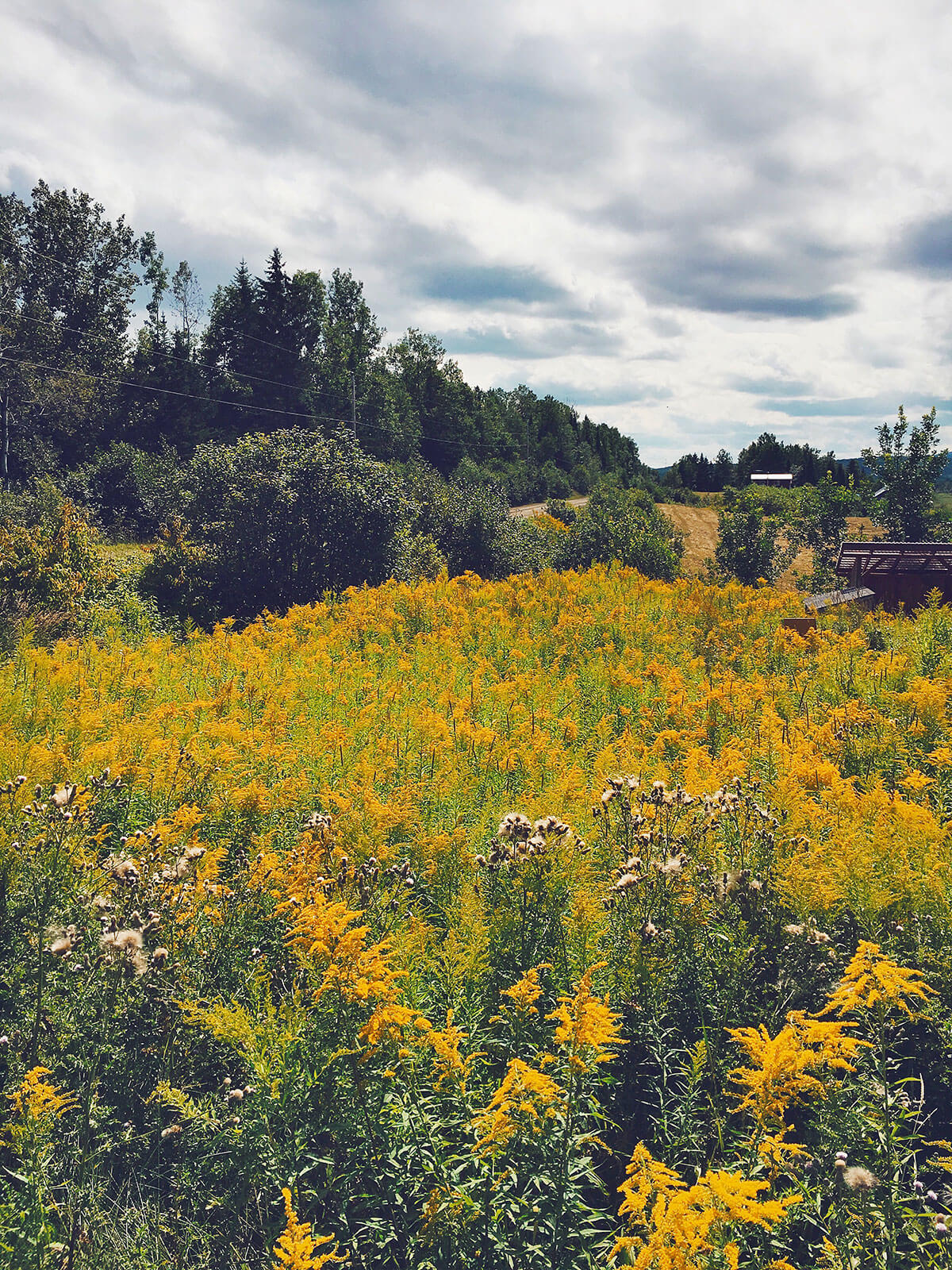
Lovely wildflowers in Quebec’s Hautes Laurentides region
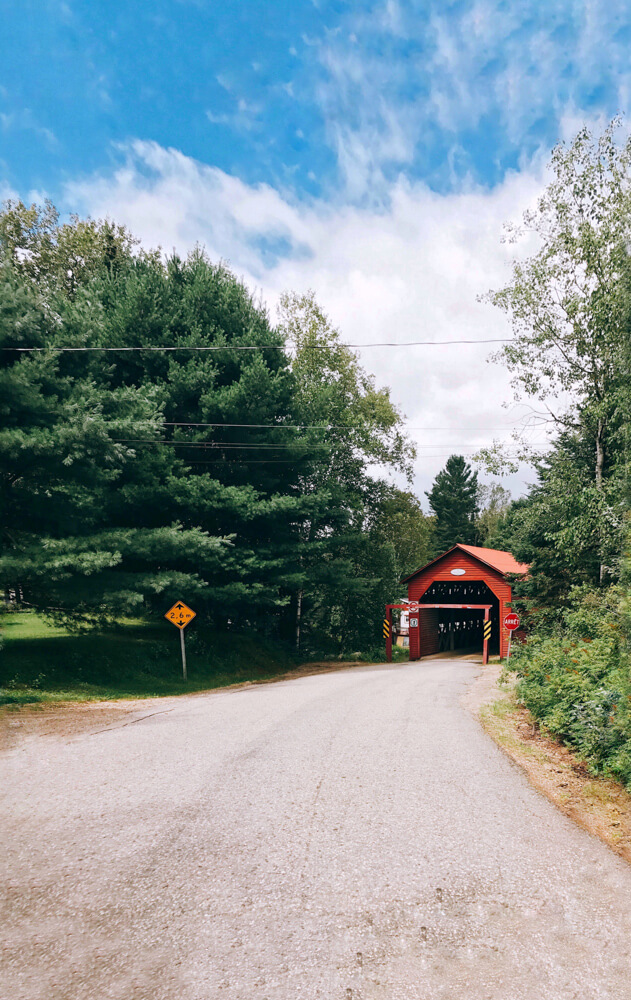
Where will the road take you? {photo © mrb404}
Less than two decades ago, Anicet took over the honey making part of the Desrochers family farm. Ten years ago–and just in the nick of time–he managed to convince his neighbours to farm organic crop instead of the GMO seeds they were about to plant. The area has since thrived and now produces some of the best organic crop in Quebec. Anicet’s 1200 beehives are spread out over an area of 100km and help pollinate the crops as well as make organic honey from all the summer and fall wild flowers and some of the planted crops, notably the gorgeous fields of delicate buckwheat flowers.
Lunch at Miels d’Anicet
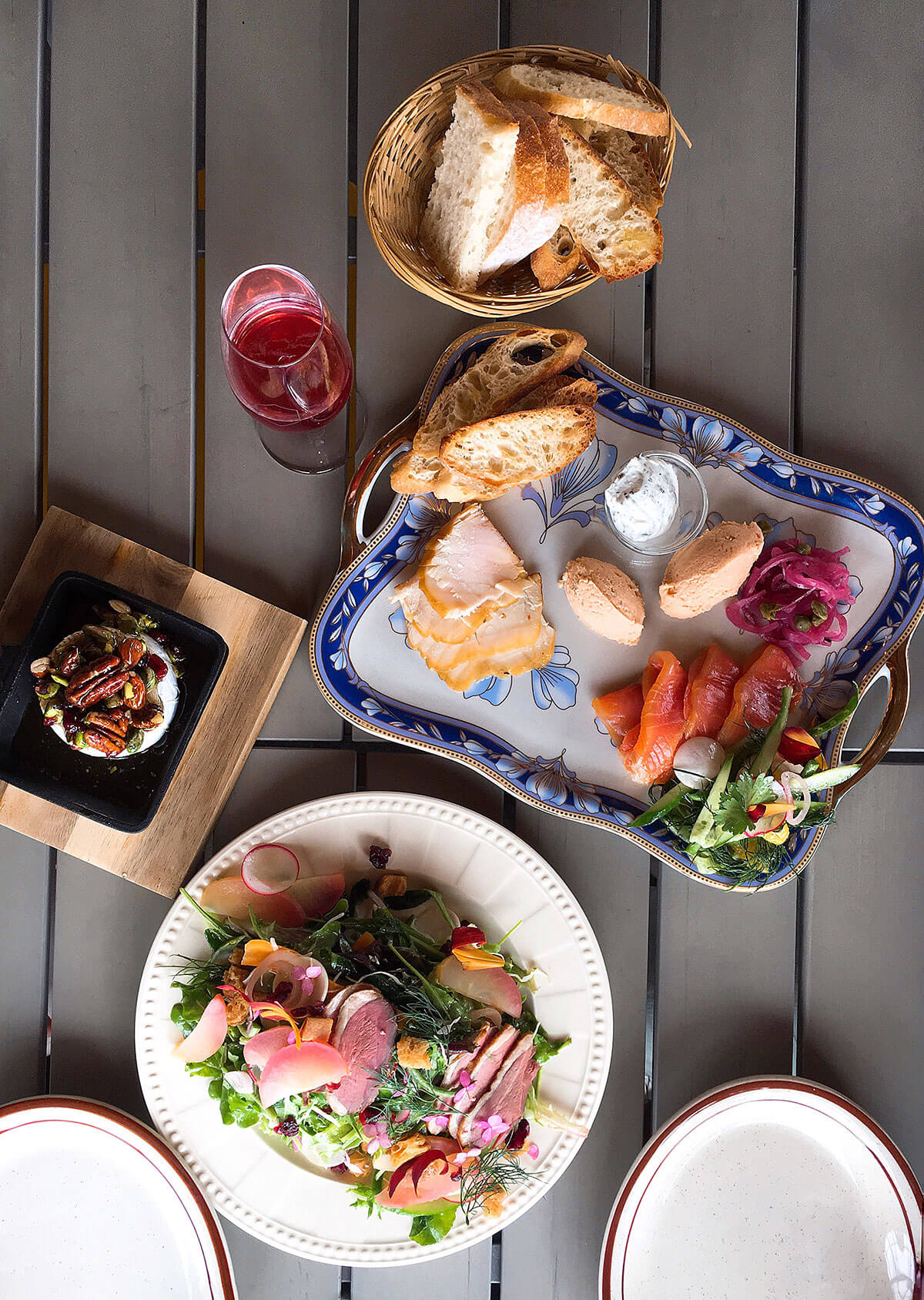
Smoked fish platter, melted brie and a colourful salad at the Miels d’Anicet restaurant
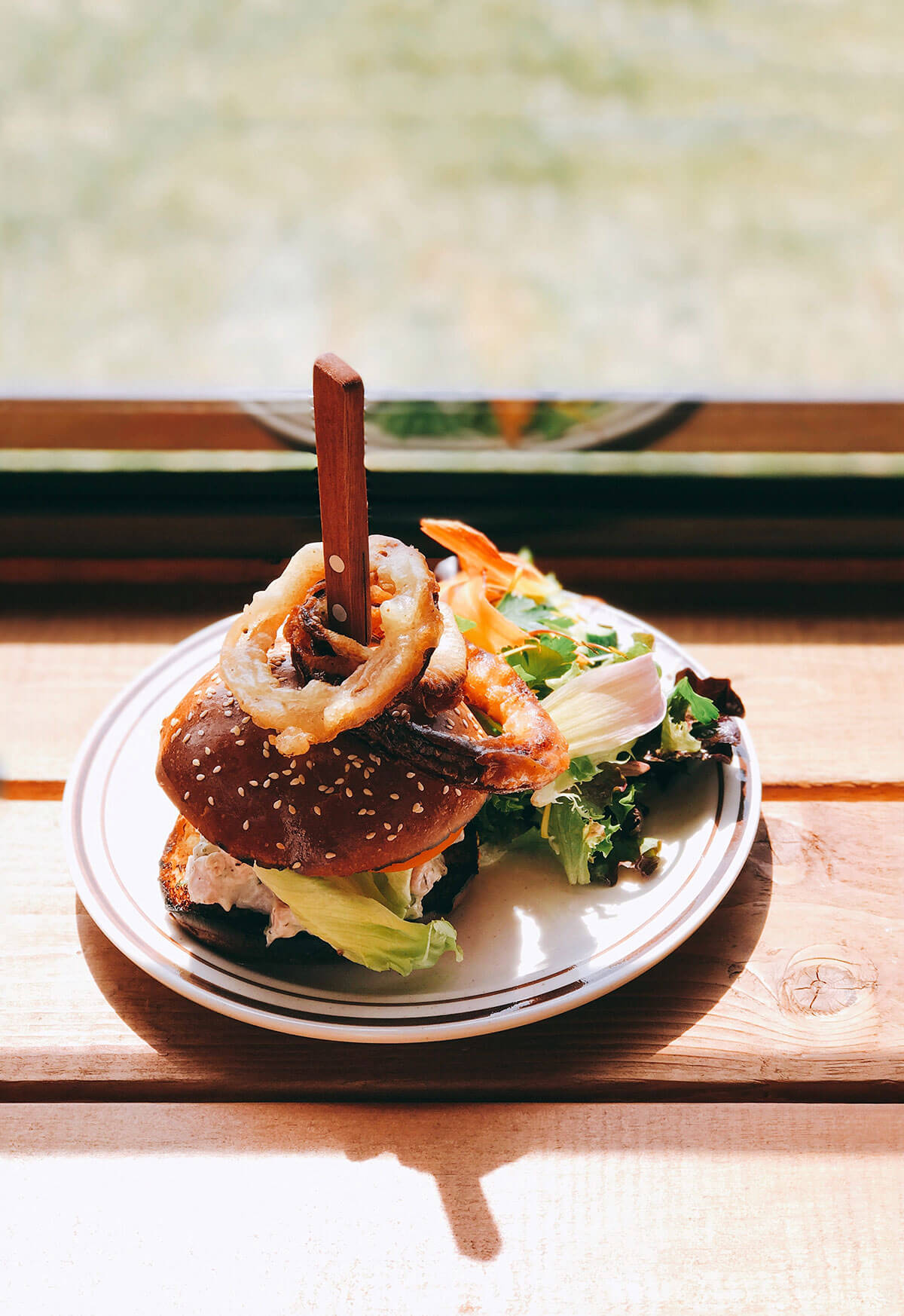
Simple food made with great ingredients at the Miels d’Anicet cantine {photo © mrb404}
Upon arriving at the Miels d’Anicet farm, we were greeted by Anne-Virginie who led us to the newly opened on-site cantine Pollens & Nectars. Opened earlier this year, the adorable café is a wood construction with great windows on three sides that let you admire the surrounding fields and lush herb and flower gardens. The menu is simple yet filled with beautiful, local ingredients that highlight Quebec’s bounty. Smoked fish platters, gorgeous colourful salads, melted brie with honey and nuts, sandwiches, cheese platters and more are available, as well as some grilled specialties at night. They also recently built a wood-burning pizza oven where they bake delicious pies three nights a week using chef Michele Forgione’s (of Montreal’s Gema Pizzeria) dough recipe. In the summer, you can stop by Pollens & Nectars for breakfast, lunch or a snack every day of the week and dinner Wednesday to Friday. If nothing else, stop by for dessert and coffee or tea sweetened with honey. Some of their homemade pie and cake recipes were created by Gabrielle Rivard Hiller who was the pastry chef for Pied de cochon’s sugar shack.
Visiting the honey factory
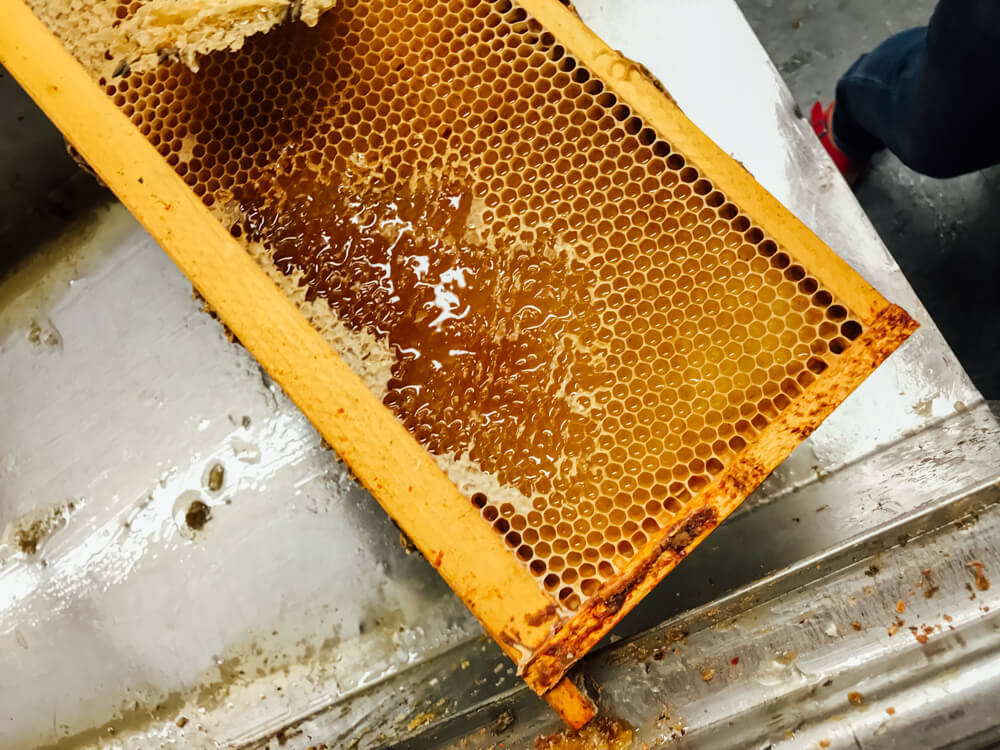
Honey straight from the source {photo © mrb404}
A visit to the honey factory is an absolute must, because it’s fascinating and delicious! We started our visit at the honey extraction area where Anne-Virginie explained the whole process step by step (while I was trying my best to ignore the dozens of bees flying around). I was so surprised to see how small the factory actually is. Many steps are still done by hand in order to prevent any damage to the integrity and health benefits of the honey. About 100 000 pounds of honey are produced each year as well as several derivatives. After the factory tour, we headed to a honey tasting where we tasted several honeys from this year’s production as well as last. It’s incredible how different all these honeys taste and that is so exciting! The commercial products strive to be uniform in taste, colour and texture and we tend to forget that honey is a live product that depends on so many factors: weather, temperature, soil, flowers, etc. Doing a tasting from the lighter summer flower honey all the way to the darkest buckwheat honey is eye opening. Even the same honeys from last year and this year are so completely different. It was really fun to taste them all and decide which I liked best before purchasing some (last year’s raw fall honey had me at hello).
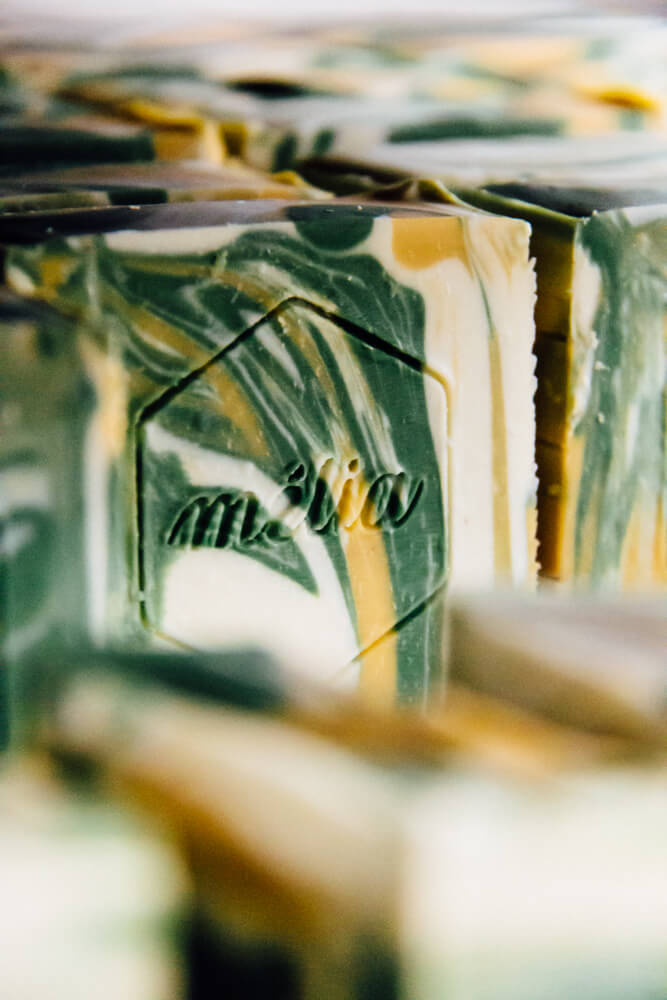
The Mélia all natural soaps smell so good! {photo © mrb404}

The Mélia all natural beauty products {photo © mrb404}
We then visited the Mélia production room. Mélia is Anne-Virginie’s latest venture and such a sweet smelling one! Mélia is a line of natural body care products made in small batches and with a respect for nature. Beehive products such as beeswax and propolis are harvested at the hives and incorporated into the products along with all natural organically certified ingredients. The result is a line of incredibly soothing soaps, body butters and lip and hand balms. I may or may not have been washing my hands constantly since I’ve returned from Ferme-Neuve because of how good the soaps smell!
End your visit at the on-site boutique where you can purchase honey, of course, but also many products made on site: granola, mead (honey “wine”) made by Anicet’s sister, the all-natural Mélia beauty products, jams, a honey-sweetened chocolate spread or peanut butter, mustards, and so much more. You can also grab a snack there in the winter, when the cantine is closed. If you have kids (and even if you don’t), head to the mini farm to pet and feed the animals and take a sneak peak at the working hive behind glass panels so you can get up close and personal with the tireless workers without any dangers.
Collecting Queen Bees
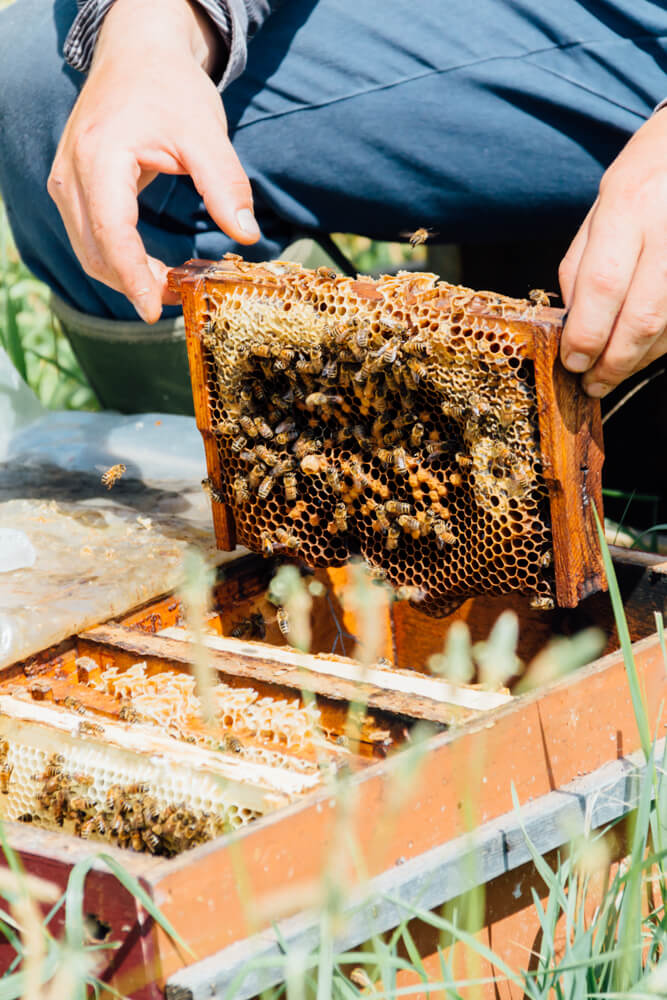
Collecting queen bees {photo © mrb404}
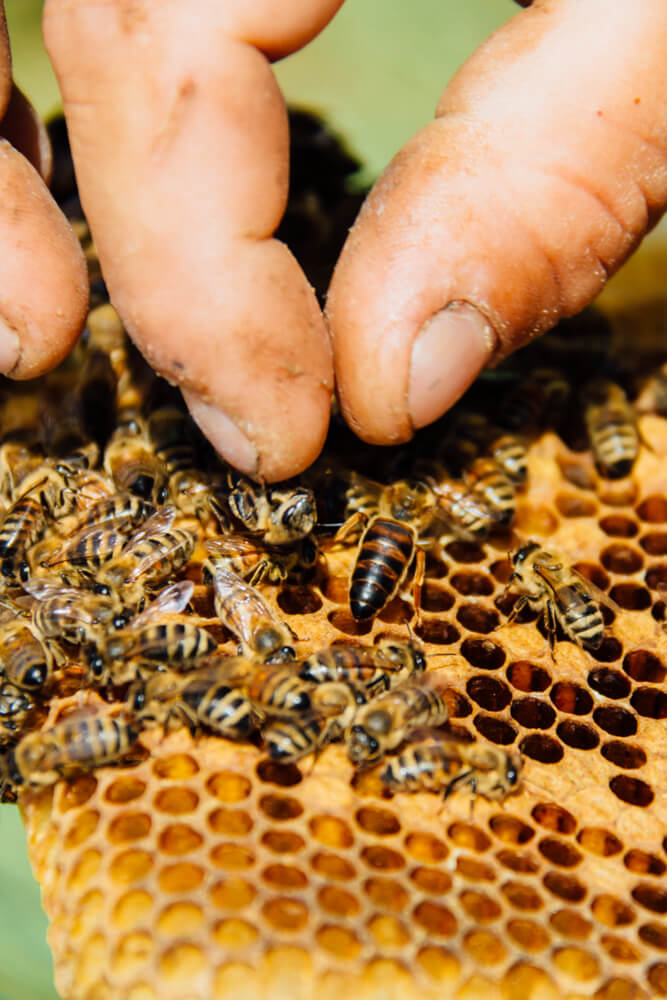
Find the queen! {photo © mrb404}
Anicet’s true passion lies in the raising of queen bees, which he’s been doing for years. He collects his queens every Monday morning, and lucky for me, I was at the right place at the right time so off we went to pay hommage to some queens (but not before I donned my astronaut suit!). It was actually the best possible scenario for me to summon up the courage to approach the hives. The queens are raised in a row of tiny hives with only a few bees in each, so a lot less than a normal hive. Anicet and his men–who were all suitless, might I add–open up each hive and look for the queen. They then place every queen in a small plastic container with a few bees and some sugar and ship the day’s collection to their new homes. Before the hive even realizes that their queen is gone, she’s replaced by a queen bee larva ready to hatch from the nursery area of the farm; and the cycle continues. Anicet is the leading queen bee expert in Canada and his queens are in high demand. In order to thrive, a hive needs a queen that has a strong genetic makeup and can start prolific colonies. It is absolutely fascinating to watch the men open up the hives and manipulate the queen with their bare hands (the queen can’t sting because of her long abdomen). The only reason why I didn’t run screaming was because Anicet kept me busy with his fascinating tales of queen bees.
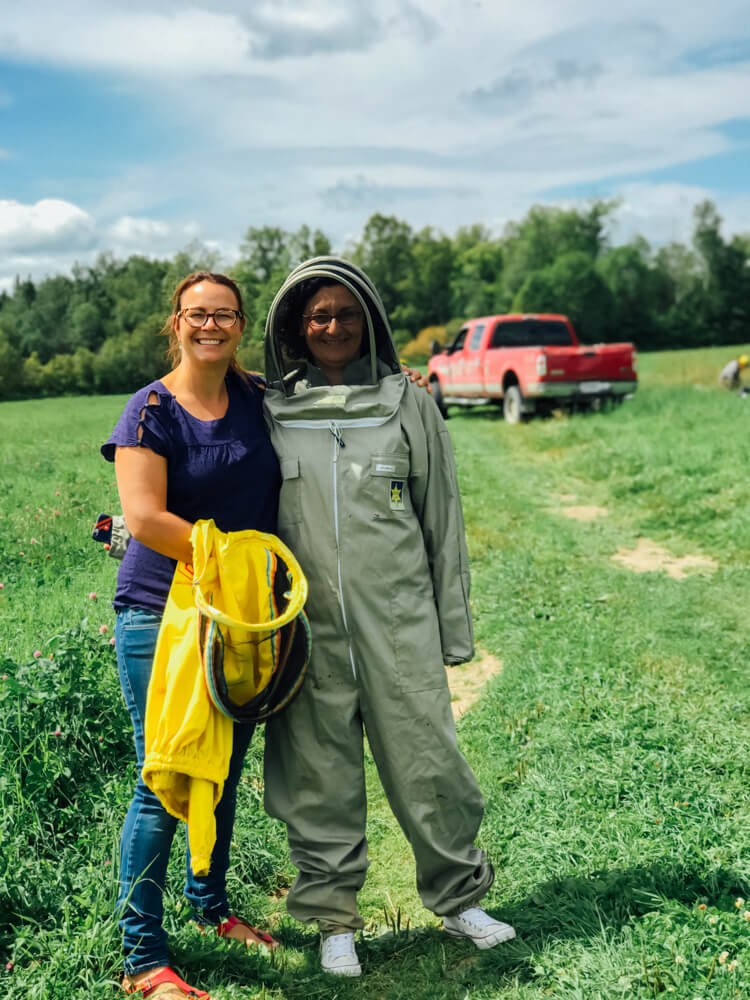
In my astronaut suit with the lovely Anne-Virginie {photo © mrb404}
Le village Windigo
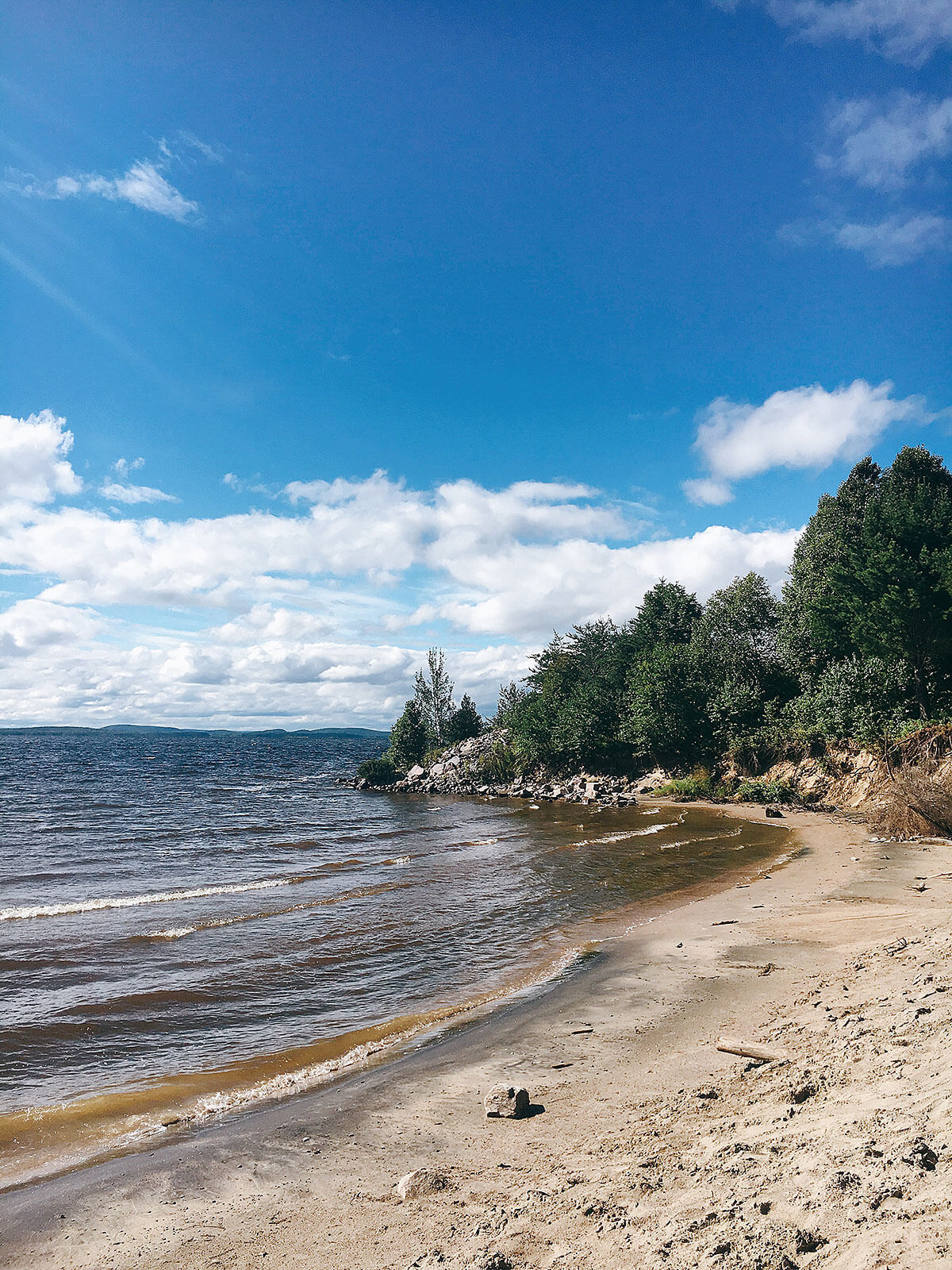
Le Village Windigo’s lovely beach
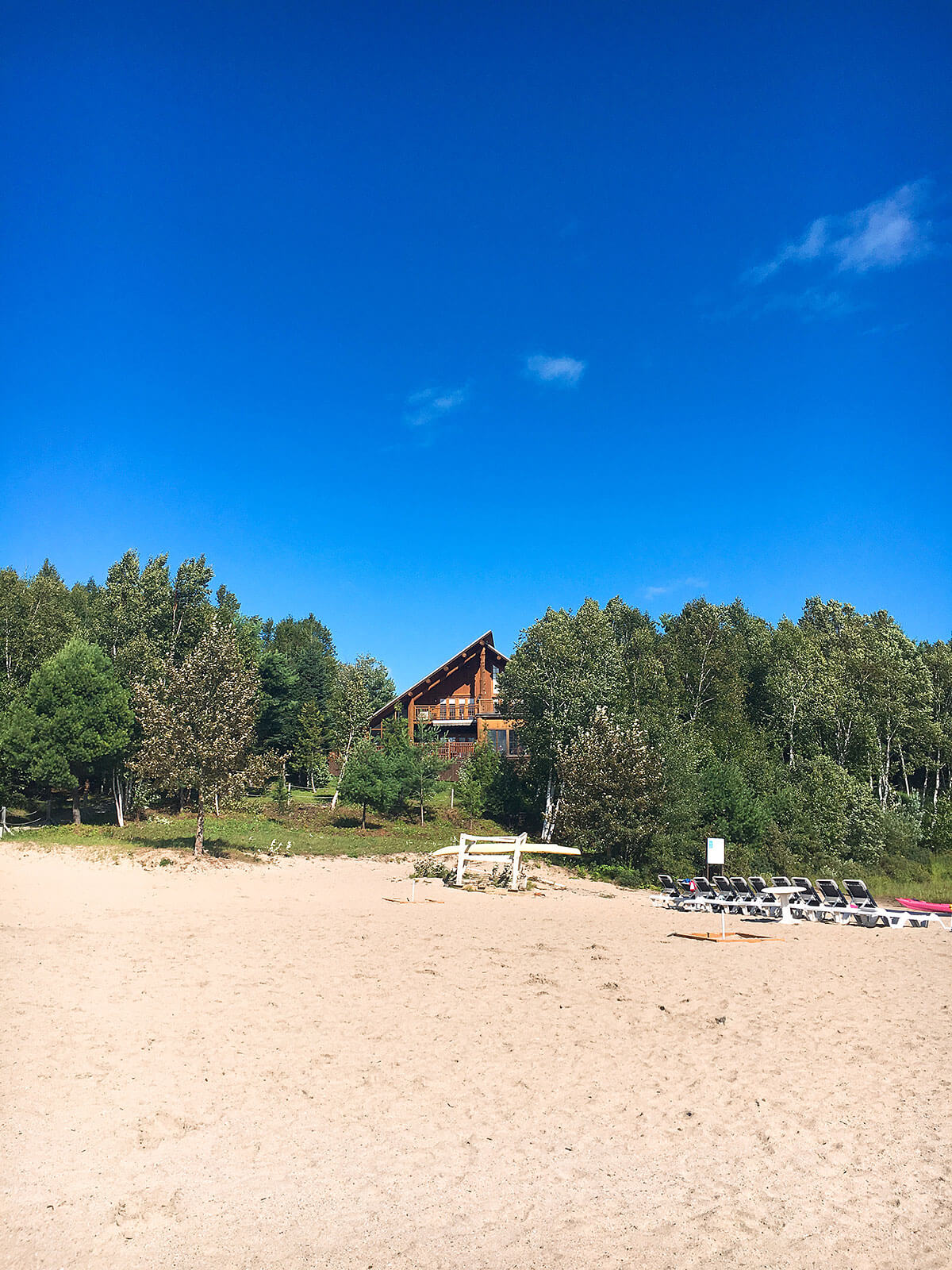
Le Village Windigo in Quebec’s Hautes Laurentides region
The Hautes Laurentides region where Miels d’Anicet is located is still fairly “wild”, in the sense that you won’t find any fancy spas or boutique hotels there. What you will find is gorgeous scenery, woods, rivers and lakes, mountains, a lot of camping grounds and endless fields filled with wild flowers. I have honestly never seen this many flowers anywhere else in Quebec and was told that there are indeed more flowers because of the absence of intense agriculture, which makes the region perfect for honeybees. About a 30-minute drive from the Anicet farm is Le Village Windigo, a crazy project by Marc Mestdagh, a businessman from Belgium who decided to build a village in the middle of the woods in Quebec. Located on a beautiful, fine sand beach on the Baskatong reservoir at the foot of La montagne du diable (The Devil’s Mountain), Windigo offers a slew of activities from water sports to tennis, biking, trekking and a nightly bonfire on the beach. There are several winter activities as well. There’s also a restaurant on site if you don’t feel like cooking in your luxurious one-bedroom apartment or multi-bedroom chalet. I wish we had had time to explore the site more deeply. It really has all the benefits of camping in the woods, with none of the inconveniences (yay for indoor plumbing!), which I really appreciate. I am considering going back in the fall when the colours must be gorgeous!
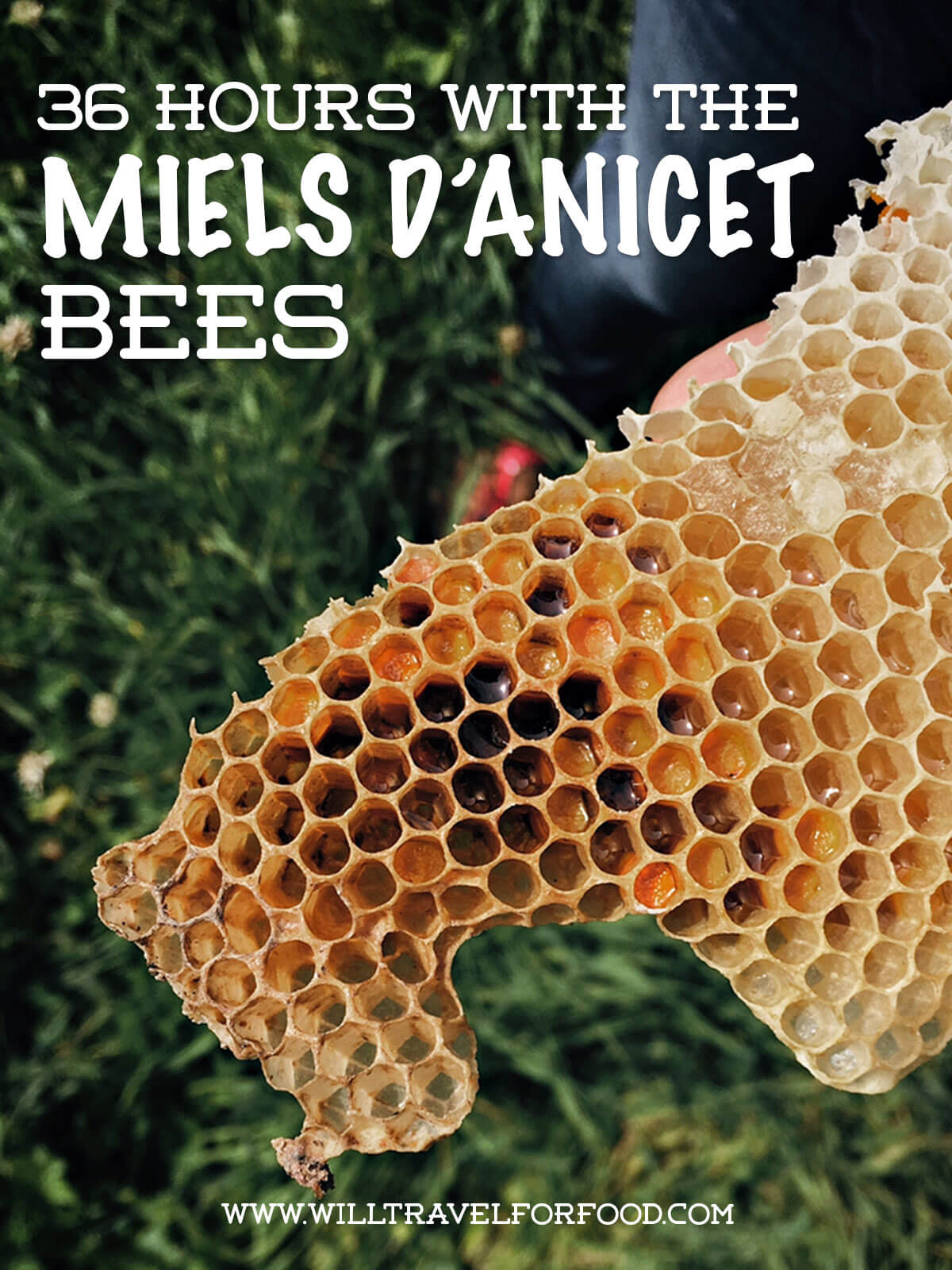
A weekend with the Miels d’Anicet bees
Many thanks to Tourisme Laurentides and Le Village Windigo for hosting me for the night and to Anicet and Anne-Virginie for being such lovely, generous and welcoming hosts. I am a little less afraid of bees now and can’t wait to go back and perhaps this time, I will actually venture all the way to the main hives.
Check out more photos of my lovely weekend with the bees on my Facebook page.



